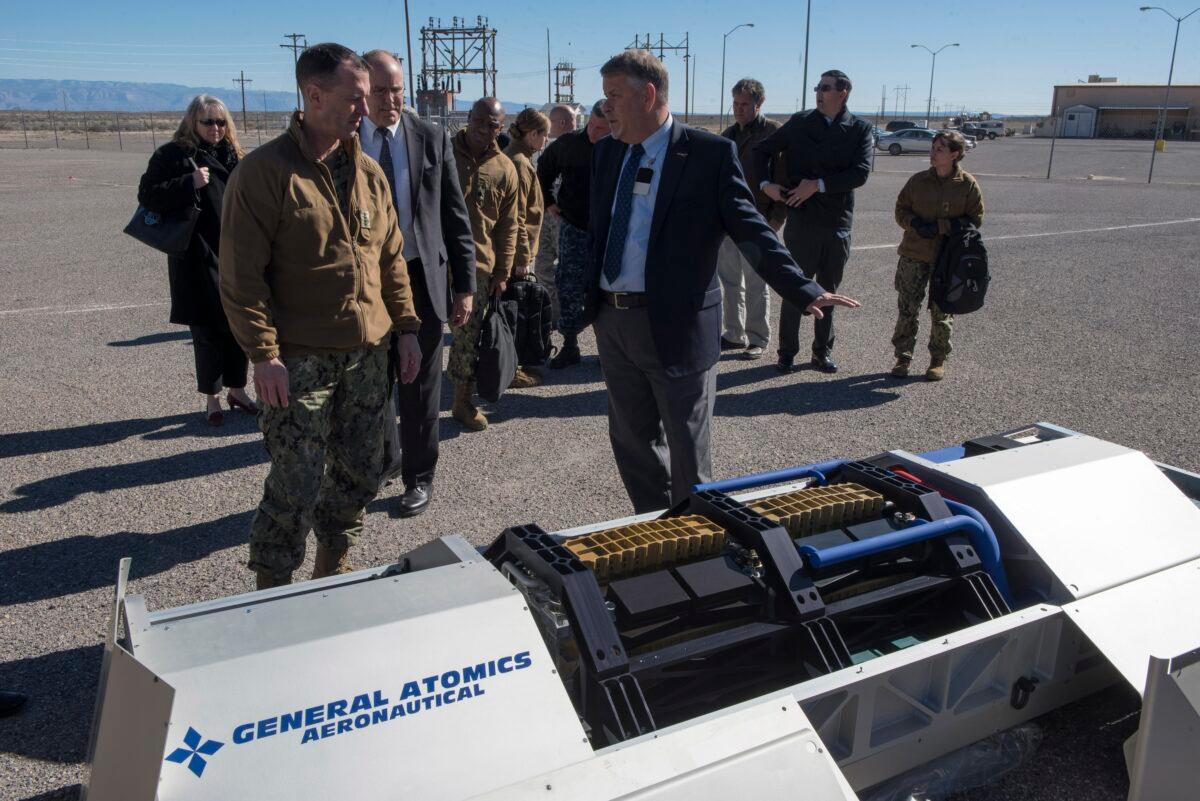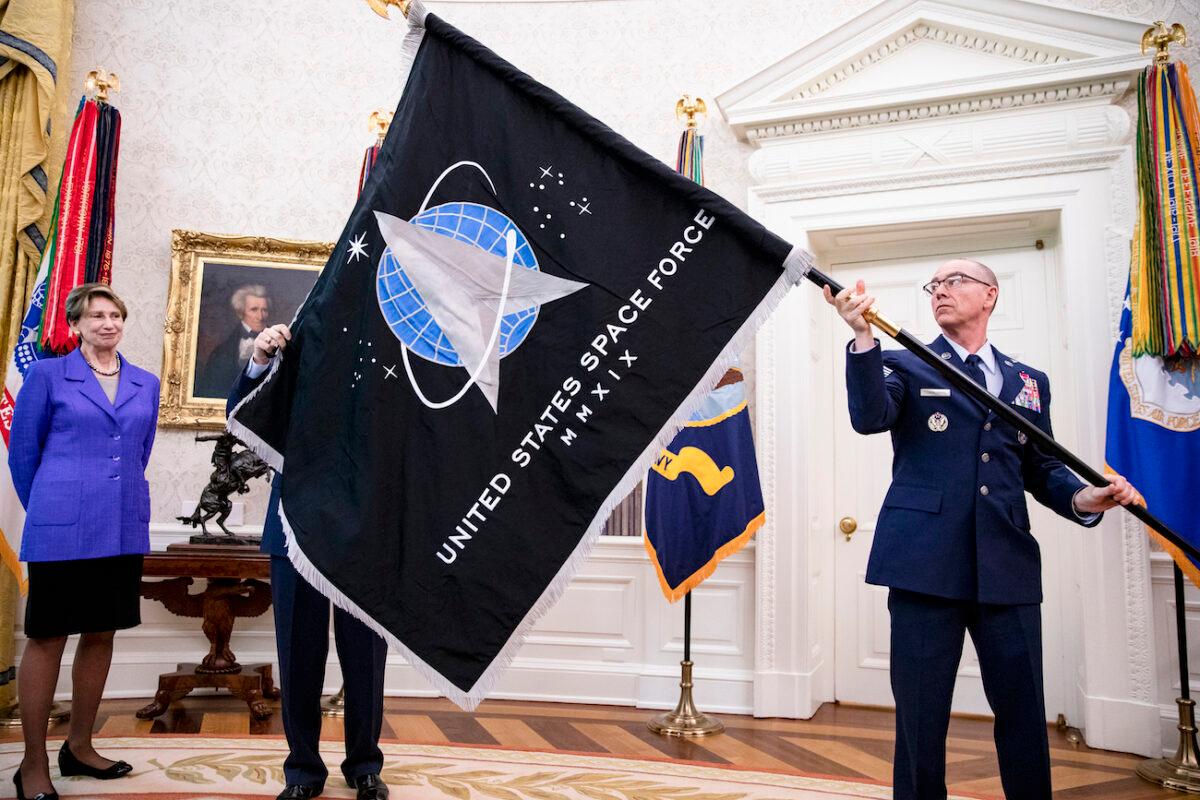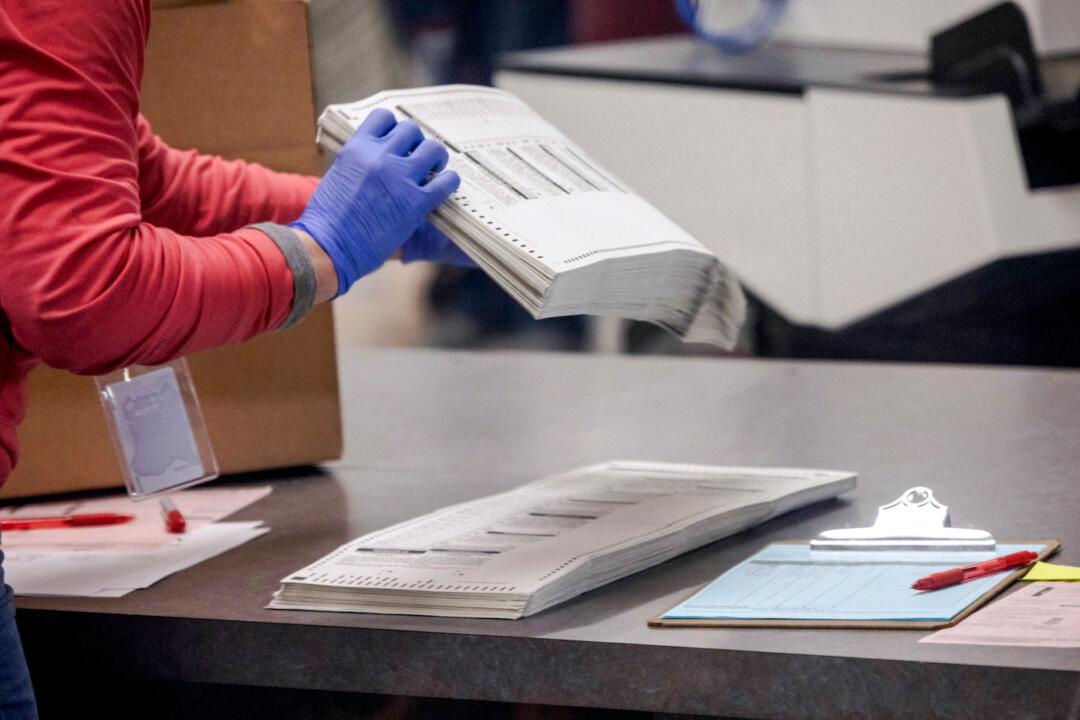“In space, Moscow and Beijing have turned a once peaceful arena into a warfighting domain,” Esper said.
“They have weaponized space through killer satellites, directed energy weapons, and more in an effort to exploit our systems and chip away at our military advantage.”
Directed energy weapons use converted chemical or electrical energy and focus it on a target, resulting in physical damage. Weapons used by the U.S. military include systems that use high energy lasers.
Directed energy weapons can be very effective against swarm attacks, a Pentagon official said in 2018.
“That sort of thing—it’s really hard to envision handling swarming attacks by purely kinetic means—so that’s one of the future threats that I think we face.”
Killer satellites are satellites with the capability to kill and destroy.

Esper said America’s competitors and adversaries “exploit cyberspace to undermine our security without confronting our conventional strengths.”
“They do this all in an increasingly gray zone of engagement that keeps us in a perpetual state of competition. The national defense strategy guides us as we adapt the force to this challenging complex security environment by status quo and continue outpacing the competition,” he added.
But strong investment is enabling the military to move forward with developing hypersonic weapons and other modern tools.
“Thanks to our largest research and development budget in the department’s history, we are advancing critical technologies to maintain our military edge in areas such as hypersonic weapons, directed energy and autonomous systems,” Esper said.
Esper was speaking during the Air Force Association’s Virtual Air, Space & Cyber Conference.
President Donald Trump’s administration officially launched Space Force late last year, establishing it as a sixth branch of the military.
The Defense Space Strategy, released earlier this year, outlines what the United States needs to do to achieve a “comprehensive military advantage” in space within 10 years.

Three key objectives are identified for the Space Force: to maintain America’s space superiority; to provide space support to all joint military operations; and to “ensure space stability”—or to deter aggression and uphold international agreements in space with a persistent presence, similar to how the Navy polices international waters.
Esper said he’s proud of the progress made in implementing the strategy, which will “ensure our dominance across all domains.”
Esper spoke a day after Gen. John Raymond, who heads Space Force.
Raymond praised the 2nd Space Warning Squadron at Buckley Air Force Base, Colorado.
“They operated the world’s best missile warning capabilities and they did outstanding work, and I’m very very proud of them,” he said at the conference.
Trump had said “an early warning system that worked very well” helped avoid U.S. casualties, but didn’t disclose the nature of the system.





